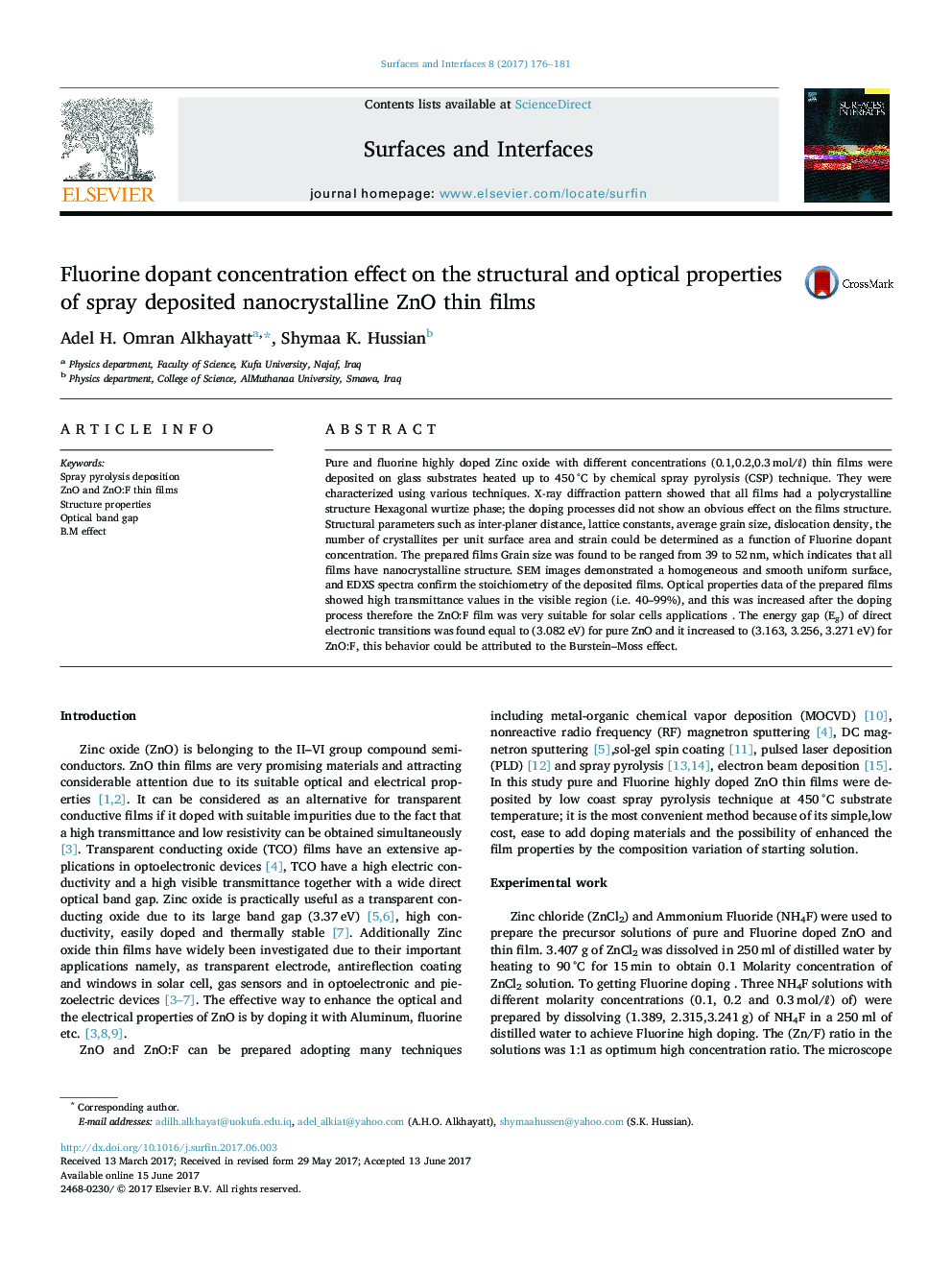| Article ID | Journal | Published Year | Pages | File Type |
|---|---|---|---|---|
| 4985646 | Surfaces and Interfaces | 2017 | 6 Pages |
Abstract
Pure and fluorine highly doped Zinc oxide with different concentrations (0.1,0.2,0.3 mol/â) thin films were deposited on glass substrates heated up to 450 °C by chemical spray pyrolysis (CSP) technique. They were characterized using various techniques. X-ray diffraction pattern showed that all films had a polycrystalline structure Hexagonal wurtize phase; the doping processes did not show an obvious effect on the films structure. Structural parameters such as inter-planer distance, lattice constants, average grain size, dislocation density, the number of crystallites per unit surface area and strain could be determined as a function of Fluorine dopant concentration. The prepared films Grain size was found to be ranged from 39 to 52 nm, which indicates that all films have nanocrystalline structure. SEM images demonstrated a homogeneous and smooth uniform surface, and EDXS spectra confirm the stoichiometry of the deposited films. Optical properties data of the prepared films showed high transmittance values in the visible region (i.e. 40-99%), and this was increased after the doping process therefore the ZnO:F film was very suitable for solar cells applications . The energy gap (Eg) of direct electronic transitions was found equal to (3.082 eV) for pure ZnO and it increased to (3.163, 3.256, 3.271 eV) for ZnO:F, this behavior could be attributed to the Burstein-Moss effect.
Related Topics
Physical Sciences and Engineering
Chemical Engineering
Colloid and Surface Chemistry
Authors
Adel H. Omran Alkhayatt, Shymaa K. Hussian,
